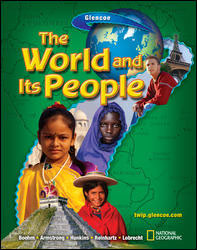
The World and Its PeopleChapter 20: Central and East AfricaChapter OverviewsCentral Africa includes seven countries. The Congo, Africa's second-longest river, winds through Central Africa until it empties into the Atlantic Ocean. The largest country, the Democratic Republic of the Congo, has rich natural resources that are largely undeveloped because of political unrest and the difficulty of transportation. One of the world's largest rain forests covers the center of the country. The people of Cameroon and the Central African Republic are mostly farmers, but the countries are beginning to industrialize. Congo and Gabon both won their independence from France in 1960, and their economies rely on lumber exports. The island countries of Equatorial Guinea and São Tomé and Príncipe make use of their rich volcanic soil to export timber, bananas, coconuts, and cacao. Recently discovered oil is now the leading export in Equatorial Guinea. Kenya's coastal plain borders the Indian Ocean. In the western part of the country lies the Great Rift Valley. Although Kenya has a developing economy, with tourism one of the fastest-growing industries, many of its people remain poor. Kenya's people are divided among 40 ethnic groups, but they believe in harambee, which means "pulling together." Mt. Kilimanjaro, the highest point in Africa, is located in the north of Tanzania. Because farming and tourism are the main economic activities in Tanzania, the government has taken steps to protect the habitats of Tanzania's wildlife and to preserve farmland. To the west of Kenya and Tanzania lie the landlocked countries of Uganda, Rwanda, and Burundi. Subsistence farming is the main economic activity in all three countries, which have suffered from violent conflicts in recent years. Sudan, Ethiopia, Eritrea, Djibouti, and Somalia make up a region called the Horn of Africa. Sudan is the largest country in Africa. Most of Sudan's people live along the Nile River or one of its tributaries. A civil war between the people of the north and the south broke out in the 1980s, and the government is still searching for ways to end this conflict. In Ethiopia, a drought in the 1980s led to a famine in which more than 1 million Ethiopians died. In 1993, after 30 years of war, neighboring Eritrea won its independence from Ethiopia. The tiny country of Djibouti, one of the hottest, driest places on the earth, lies at the northern tip of the Great Rift Valley. In Somalia, fighting among different clans continues today and there is no real government in charge of the country. |  |















